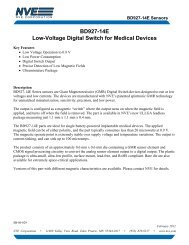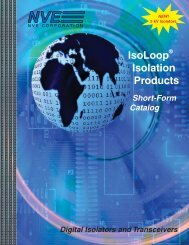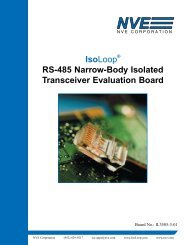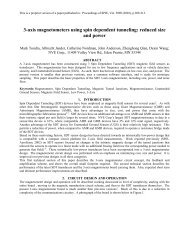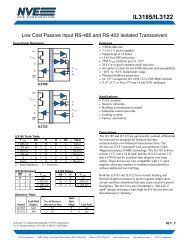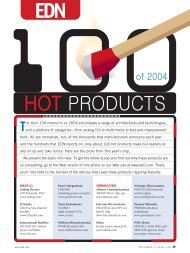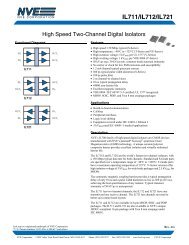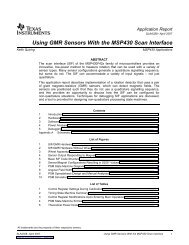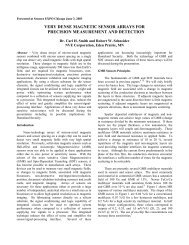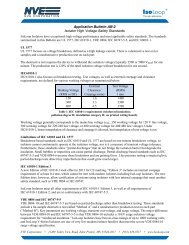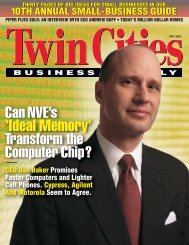Magnetoresistive Random Access Memory (MRAM) Technology (.pdf)
Magnetoresistive Random Access Memory (MRAM) Technology (.pdf)
Magnetoresistive Random Access Memory (MRAM) Technology (.pdf)
You also want an ePaper? Increase the reach of your titles
YUMPU automatically turns print PDFs into web optimized ePapers that Google loves.
<strong>Magnetoresistive</strong> <strong>Random</strong> <strong>Access</strong> <strong>Memory</strong> (<strong>MRAM</strong>)<br />
By James Daughton<br />
Copyright © 2/4/00<br />
In the 1980’s it was believed that as the memory cells approached the<br />
dimensions of a domain wall width, there would be no more problems with multidomain<br />
magnetization in the cells, i.e. the magnetization would act as a single<br />
collection of spins with only one rest state. This myth was shown to be false by<br />
both experiment and data. Anomolies called “vortices” can occur in cells as<br />
small as a few tenths of a micron in diameter [17], and example of which is<br />
illustrated in a simulation shown in Figure 12. These can be prevented in PSV<br />
cells by using sharp ends [16], one example of which is shown in Figure 13, but<br />
at the expense of cell area. Recently, a circumferential magnetization storage<br />
mode in round <strong>MRAM</strong> cells has been proposed [18]. Vortices are the<br />
unanticipated problem in <strong>MRAM</strong> technology.<br />
Figure 10. Field Enhancement Due To Keepers.<br />
Contact: Jim Daughton: tel. (952) 996-1607 or email: daughton@nve.com<br />
Page 10 of 13



